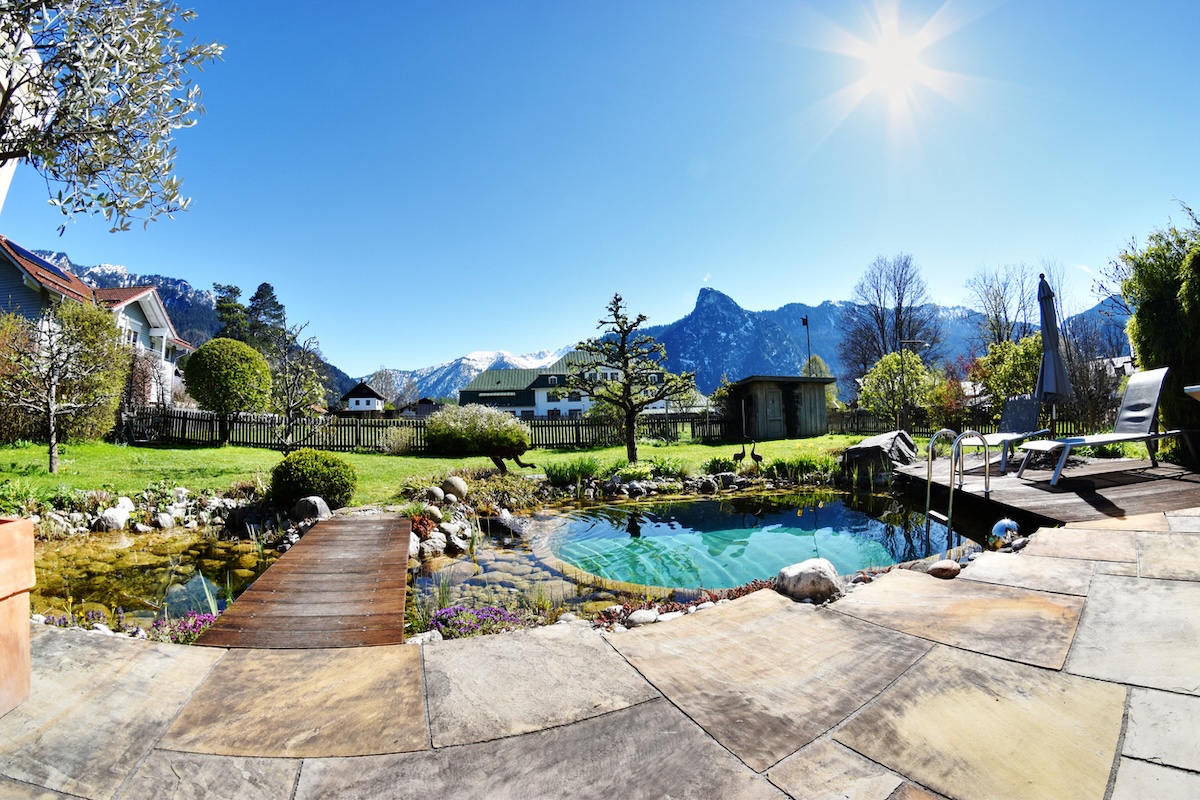

We may earn revenue from the products available on this page and participate in affiliate programs. Learn More ›
Anyone who’s ever seen an inground pool that looks like a pond has probably wondered just what they are and whether they’re even clean enough to swim in. These pond-like pools actually have a name: natural swimming pools. Once you learn more about what they are and how they’re able to safely offer a more traditional swimming experience, you just might decide to install one in your own backyard.
What Is a Natural Swimming Pool?
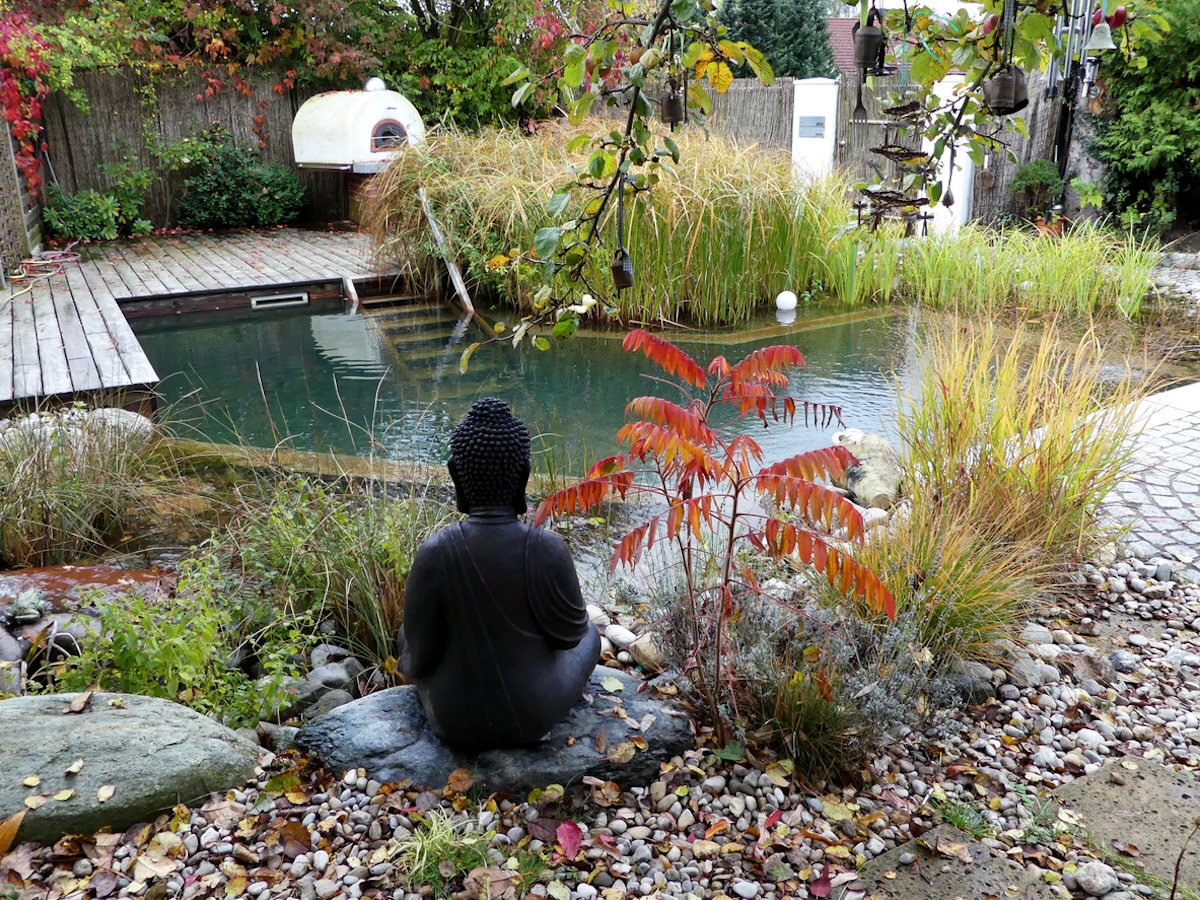
“A natural swimming pool is essentially just a swimming pool that does not rely on chlorine or other common pool-cleaning chemicals to remain clean and safe to swim in,” says LawnStarter CEO Ryan Farley. He explains that these pools “tend to rely on things like creating a natural, organic ecosystem within the pool using plants, and continually circulating water to prevent the build up of harmful bacteria.” A natural pool may also be referred to as an organic pool, an eco pool, or a natural swimming pond.
As you can probably guess based on the brief overview above, natural pools look quite different from the average above-ground or inground pool. The plants and rocks essential to a natural pool’s operation also contribute to the overall aesthetics and landscaping of the property it’s installed on.
How Natural Swimming Pools Work
Natural swimming pond design seeks to mimic nature’s ability to keep rivers, streams, and creeks clean, while still incorporating some modern tech to keep the pool water swimming-ready. Plants and rocks—instead of chlorine, pool stabilizers, and other chemicals—keep water clean as part of a natural filtration system. To accomplish this feat, two zones are constructed in a natural pool.
Both around the same size, these zones are separated by an underwater wall. There’s the main swimming zone, from where pumps pull any dirty water and send it to the outer zone, which is known as the regeneration zone. A natural biofilter, this regeneration zone features plants and rocks that work together to naturally filter the pool water. Good bacteria also grow in the regeneration zone, eating harmful bacteria, pool algae, and other icky substances typically targeted by chlorine.
Are Natural Swimming Pools Safe to Swim In?
“When properly maintained, natural swimming pools are perfectly safe,” declares Rafi Friedman, president of Coastal Luxury Outdoors, a pool building company in Jacksonville, Florida. Farley shares the same opinion, explaining, “I would say that they are safe to swim in—as safe at least as the lakes or other swimming spots we enjoy out in nature, which also tend to be chlorine-free!” As described above, the plants and rocks in a natural swimming pond’s regeneration zone work in tandem to effectively remove bacteria and contaminants before sending clean water back into the swimming zone.
Pros and Cons of Natural Swimming Pools
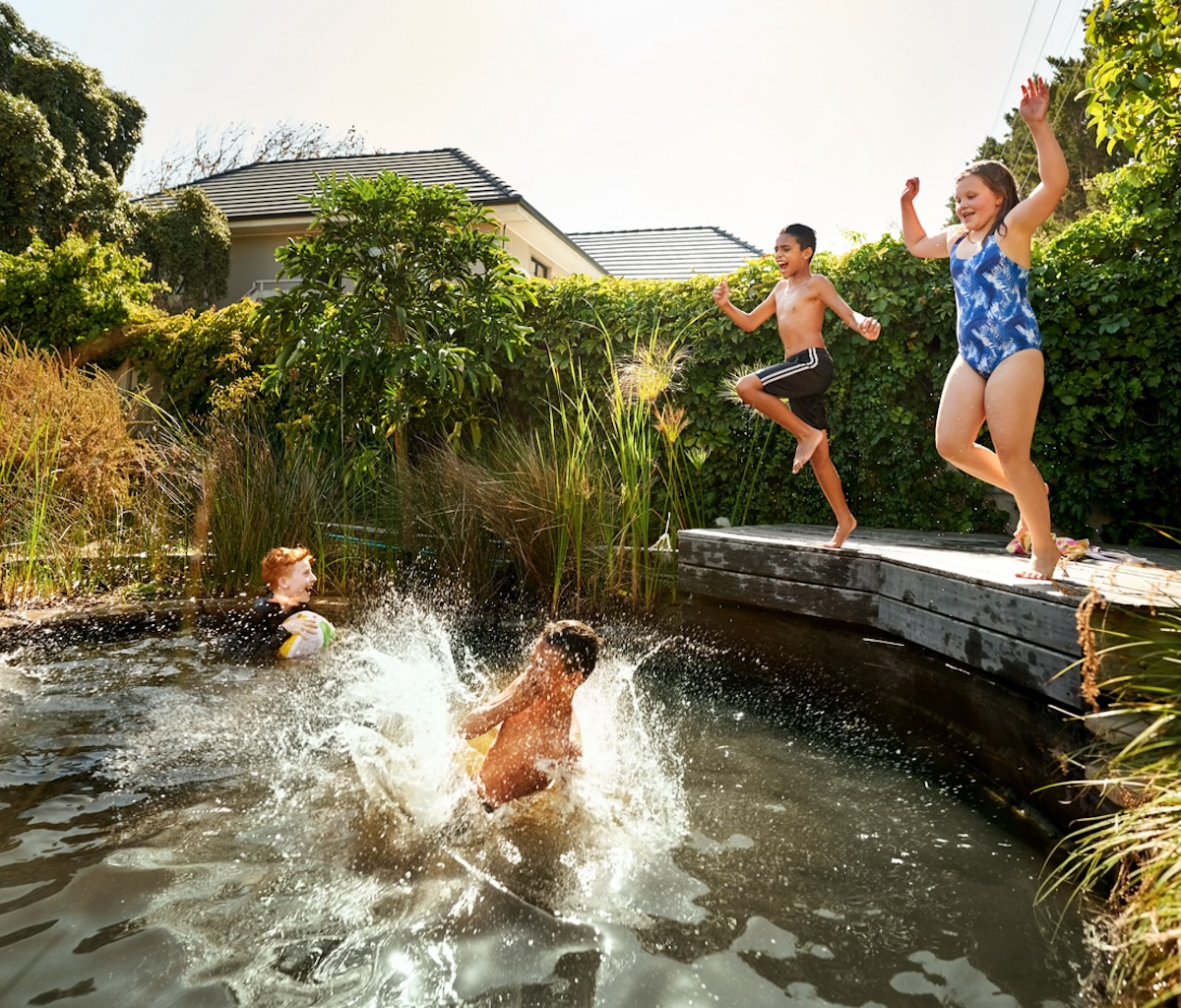
As with most other major construction projects, natural swimming pools have their own list of pros and cons that prospective builders will need to weigh. “One of the major pros of this type of pool is just reducing your exposure to chlorine and other chemicals, which can be irritating to your eyes, skin, and hair,” says Farley. Beyond the chemical-free swimming they offer, Friedman explains that natural ponds are “also beautiful features that can make your backyard much more attractive and serve as a home for beneficial wildlife.”
Despite all these benefits of natural pools, there are also some drawbacks to consider. Friedman explains, “Natural swimming pools are hard to maintain.” The swimming zone will require weekly skimming and brushing, much like other pool types. However, you’ll also have to keep up with routine maintenance of the regeneration zone to keep the filtering process running smoothly. This will entail removing sticks, dead leaves, and other debris and trimming back some of the plants.
If you’re thinking about selling your property, you may also want to consider how a natural pool could impact the resale value of your home. While some individuals may appreciate their eco-friendly nature, Friedman’s points out that they “may turn off some buyers who are used to the ‘cleaner’ feel of an artificially maintained pool.”
One other serious drawback is the amount of space that a pond swimming pool takes up. Because of the need for a regeneration zone around the swimming area, this type of pool takes up a lot more space than a standard one, so it probably isn’t feasible for homes with a smaller yard.
Installing a Natural Swimming Pool
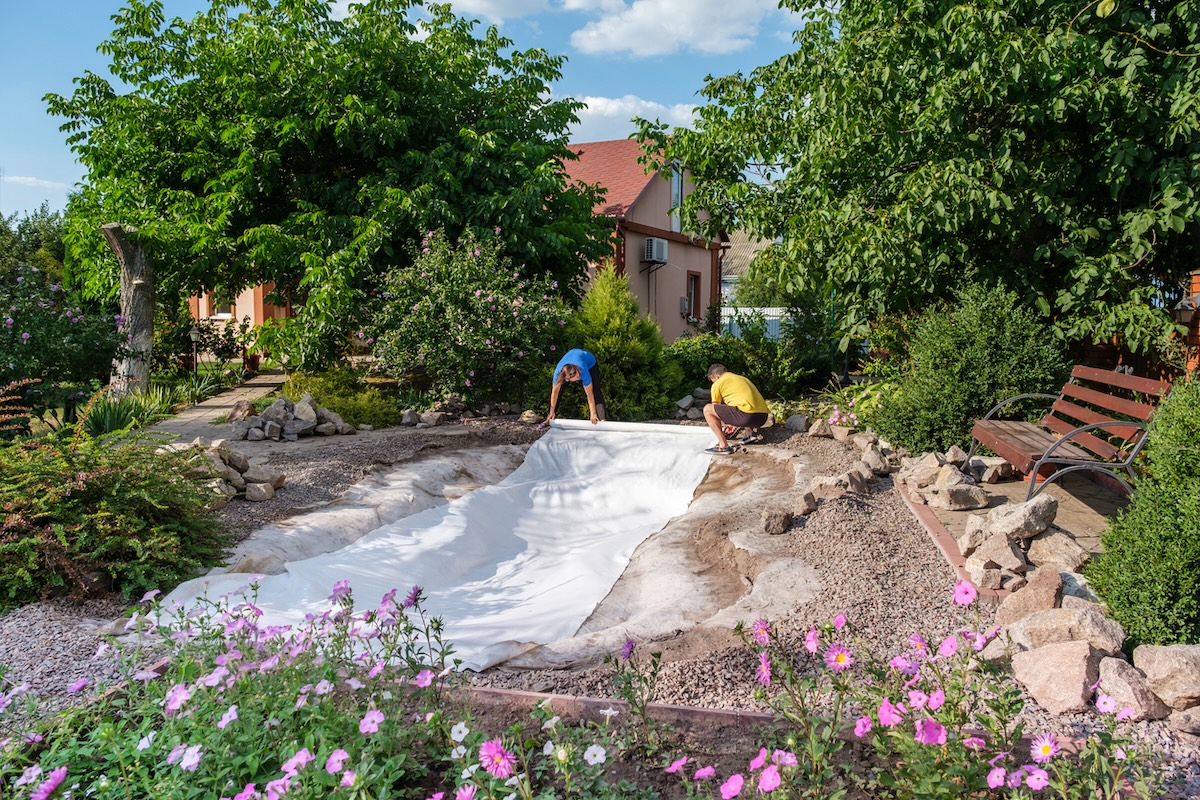
Building a natural pond pool in your yard is likely to cost more than an above- or inground pool, and likely more than building a pond of a similar size. As a general rule, you should expect to spend about 10 percent more to have a natural swimming pool installed on your property. However, once built, natural swimming pool maintenance is relatively cheap since you don’t need to regularly purchase pool chemicals to keep it clean, so it may be cheaper to have a natural pool than a regular pool in the long run.
If you’re considering installing a natural swimming pool, you’ll also need to make sure you have sufficient space on your property. Remember, these pools require two separate zones; the regeneration zone should be about the same size as the swimming zone. That means you’ll need to plan on the overall structure taking up about twice as much space as the area where you want to swim.
Popular Natural Swimming Pool Plants
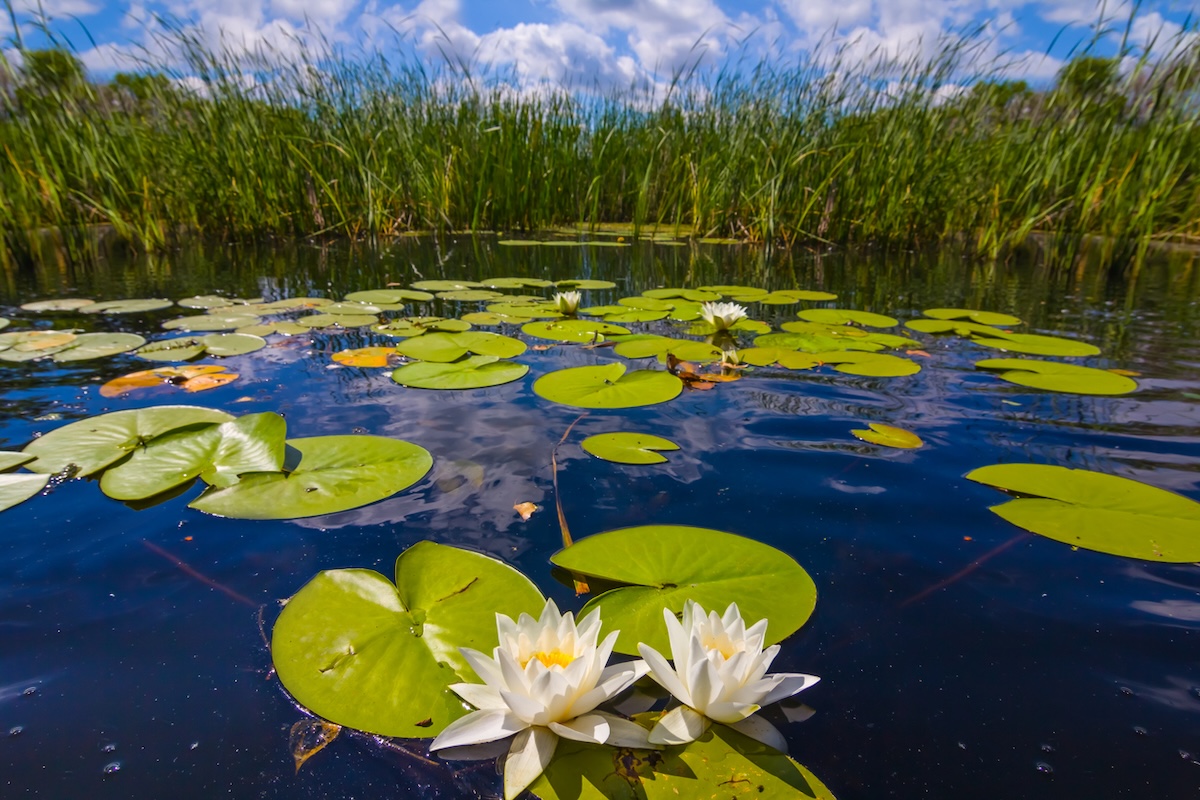
An important component of organic swimming pool design, the plants that grow in the regeneration zone can be as pretty as they are hardworking. There are several pond plants that can be used to filter pool water while also contributing to the overall aesthetics of your backyard swimming pond and landscape.
Natural pools rely on four main categories of plants to keep the swimming area water safe and clean. These include emergent plants, deep water-rooted plants, floating plants, and marginal plants.
- Emergent plants: Emergent plants have roots beneath the surface of the water but grow tall enough to extend above the surface. In addition to helping filter the water, these plants also offer a home to frogs, dragonflies, and other beneficial insect visitors. Common emergent plants include sweet flag, pink sensation lilies, and pontederia.
- Deep water-rooted plants: As the name suggests, these plants are rooted well beneath the surface of the water, typically in a pot or other media. For the most part, their leaves and stems stay covered by pool water, though you may see small parts peek out now and then. While deep water-rooted plants don’t have much impact on a pool’s aesthetics, they do play an important role in filtering the water. Anacharis, red ludwigia, and mermaid plants are a few examples of these underwater plants.
- Floating plants: Floating plants add visual appeal to a natural pool. However, these plants tend to grow very quickly—some are even considered invasive and may take over the regeneration zone or clog the pool’s skimmers, so they have to be grown and trimmed down with care. Popular floating plants include water lilies, lotus, and hyacinth.
- Marginal plants: These plants are grown along a natural pool’s perimeter, helping to keep out and remove pollutants and, if desired, providing potential shelter and protection for wildlife. A couple examples of marginal plants include swamp hibiscus and corkscrew rush.
Maintaining a Natural Swimming Pool
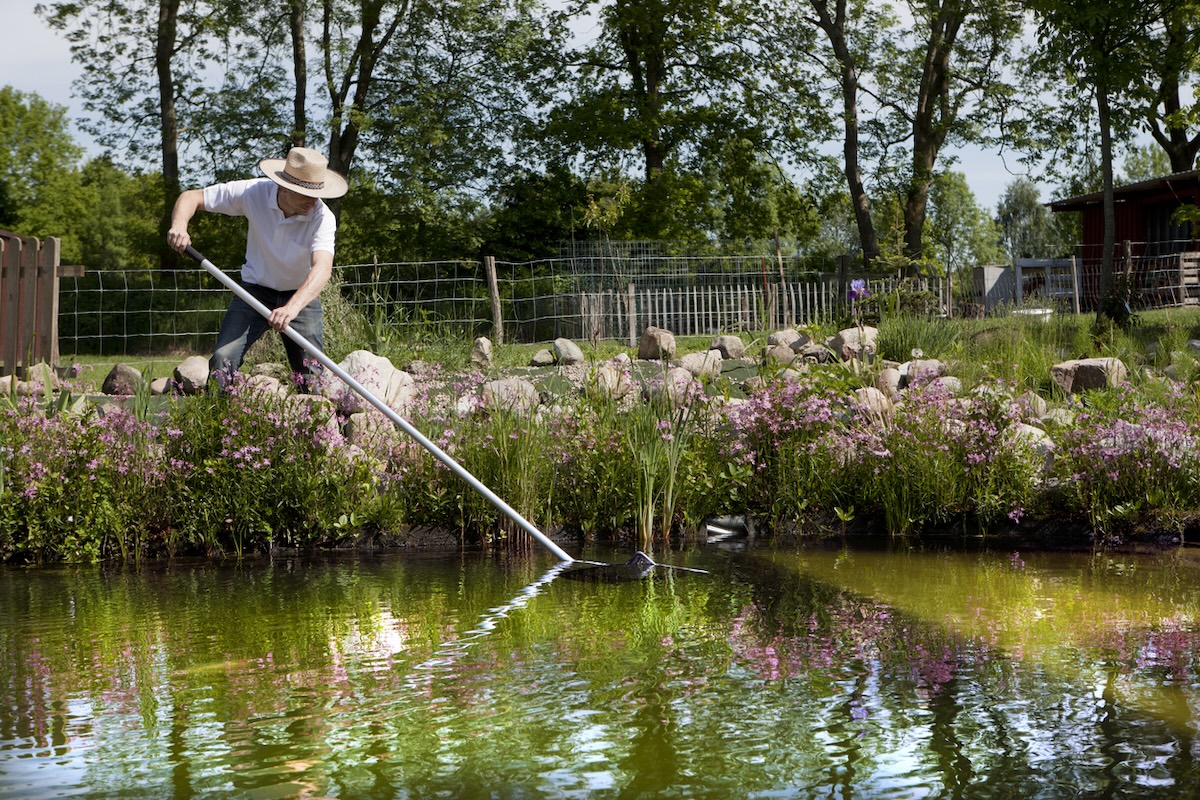
Just as proper pool maintenance is essential for other types of pools, the same is true for natural swimming pools. However, a natural pool maintenance routine looks different from what more traditional above- or inground pools require. Instead of balancing chemicals and cleaning pool filters, Friedman explains that the maintenance of a natural pond swimming pool is “mostly about keeping the water circulating and making sure there are enough plants and sediments to properly filter the water.”
To keep your natural pool clean and swimmable, you’ll need to trim back plants in the regeneration zone and remove debris like leaves and sticks from the pool bottom. To ensure the plants are able to perform their filtration work, aim to complete this task once every 4 to 8 weeks.
Vacuuming and skimming the swimming zone to keep it clean and free of algae and other debris is another part of natural pool maintenance. As with other pool types, you will also need to keep an eye on the water level and add more water as needed. The water in a natural pool is likely to evaporate a bit more quickly than in other swimming pools, so you may find yourself refilling the water more frequently.
How to Winterize a Natural Pool
The steps for winterizing a natural swimming pond may vary slightly depending on the climate where you live. If you have mild to cold winters, you can typically leave the pump running on the lowest speed, but it may be necessary to disconnect the pump and blow out the lines if you live in a region with extremely frigid winter temperatures.
You’ll also need to take steps to protect the regeneration zone plants to ensure they come back the following year and won’t need to be replaced. Start by clearing leaves, sticks, and other debris from the pool bottom and water surface. Most plants in the regeneration zone will then need to be fully submerged in the pond to help protect them against freezing in the winter. If there are any tropical plants growing in the regeneration zone, be sure to bring them indoors for the winter as they will not be able to survive outside when freezing temperatures arrive.
